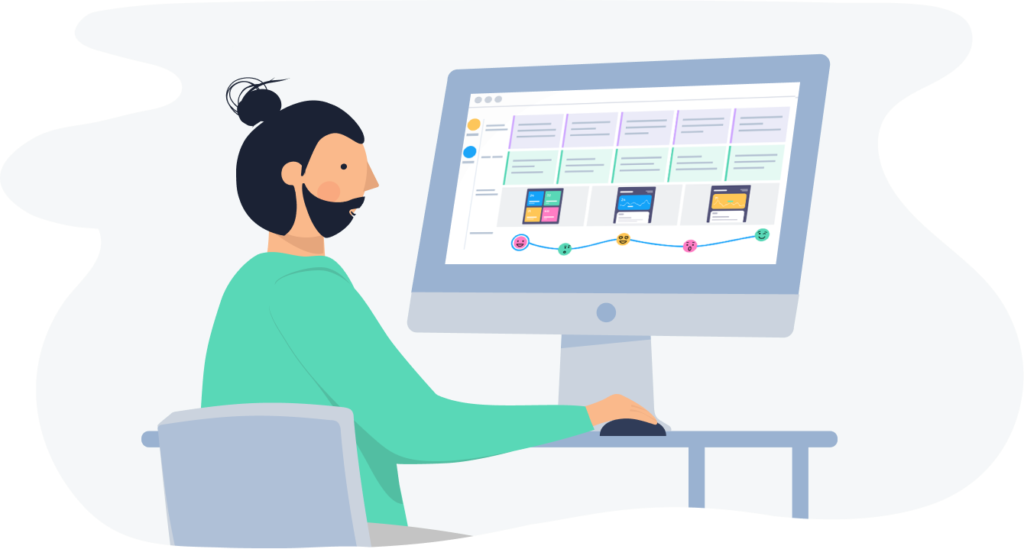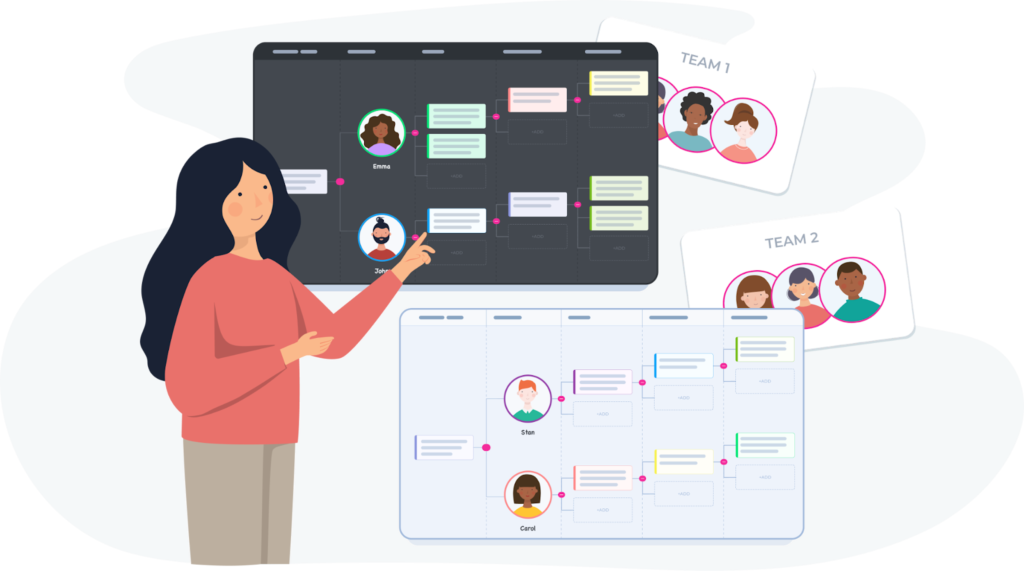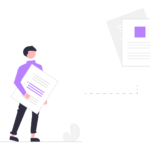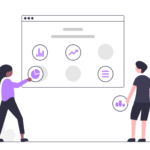The world of logistics is often seen as a series of transactions between companies, suppliers, and customers, but what if it’s more than that? Behind every transaction—shipping goods, processing orders, or managing supply chains—there are real people making decisions, solving problems, and ensuring everything runs smoothly.
Even in automated systems, human interaction is at the core, as people are responsible for optimizing processes, managing exceptions, ensuring customer satisfaction, etc. Recognizing the human element in logistics can transform how businesses approach customer experience, turning routine transactions into opportunities for building trust and long-term relationships.
Customer experience in logistics is often overlooked, yet it’s the key to retaining loyal customers. In this article, we’ll examine how smart logistics practices can dramatically improve how customers perceive your business and build lasting relationships.
Contents
The importance of customer experience in logistics

Customer experience in logistics has become a key driver of success in supply chain operations. Logistics used to focus primarily on the physical movement of goods. Today, however, the landscape has shifted dramatically due to increased competition and the power of the internet. With numerous competitors offering similar services, companies can differentiate themselves through exceptional customer experiences.
Moreover, the rise of online reviews and social media means that customers can easily share their experiences—both positive and negative—with a broad audience. A negative review or a low rating on platforms like Google Maps can deter potential clients and damage a company's reputation. Even minor inefficiencies in the logistics process can lead to delays or errors that frustrate customers, prompting them to voice their dissatisfaction online. So, companies do their best to ensure that every step of the logistics process is efficient, transparent, and customer-focused to maintain satisfaction, build brand loyalty, and ultimately drive revenue growth.
A seamless experience involves timely deliveries, transparency, real-time tracking, and responsive customer support. Failing in any of these areas can lead to significant disruptions, resulting in dissatisfied customers and lost business opportunities.
Take, for example, Amazon, a pioneer in improving customer experience in logistics. Their investment in faster shipping methods and real-time updates redefined customer expectations for e-commerce. However, when other companies attempt to match these standards but fall short, their customer experience suffers.

One notable failure is FedEx’s struggle during the holiday season in 2019. Despite their logistical expertise, unexpected delays, poor communication, and lack of transparency in shipment status caused significant retailer losses and frustrated countless customers. FedEx's inability to maintain a smooth logistics customer experience during such a critical time impacted their clients and bottom line as customers moved to competitors with better logistics services.
Another case in point is Nike, which faced severe backlash in 2021 due to delayed shipments and inconsistent delivery times during a peak sales season. Many customers shared negative experiences on social media, hurting Nike’s reputation. The root cause? Logistics disruptions and lack of communication. In this case, poor client experience in logistics led to a wave of order cancellations and lost consumer trust.
To stay competitive, companies must prioritize improving customer experience in logistics by focusing on reliability, clear communication, and quick issue resolution. Embracing innovations like AI-driven supply chain tracking, last-mile delivery enhancements, and flexible return policies are vital steps for maintaining high standards in today’s logistics landscape. Without such improvements, even the most established companies risk damaging their reputations and losing valuable customers.
But let’s look at how we can enhance the customer experience in logistics in more detail.
How to enhance customer experience in logistics

As we already said, improving the logistics customer experience is essential for businesses that want to stay competitive in today’s fast-paced market. B2B and B2C companies must invest in strategies that ensure a smooth, transparent, and reliable logistics process to build trust and retain customers. Here are some practical ways to enhance the client experience in logistics across different industries.
Focus on implementing real-time tracking and transparency
Transparency is critical for both B2B and B2C customers. Offering real-time tracking capabilities allows customers to follow their orders at every stage of the shipping process.
A B2B case example can be seen with DHL Supply Chain, which provides real-time visibility tools for businesses, allowing them to track shipments and plan for contingencies.
For B2C, companies like Domino’s Pizza have made tracking a core part of their customer experience, allowing consumers to see every stage of their pizza delivery. These approaches foster trust and reduce anxiety about late or lost shipments.
Optimize last-mile delivery efficiency
Last-mile delivery is often the most complex and costly part of the logistics process, especially in B2C sectors. Companies like Amazon have innovated by using local delivery partners and offering flexible delivery windows, significantly enhancing the customer experience by ensuring speed and convenience.
For B2B, UPS has introduced solutions like advanced route optimization for commercial deliveries, ensuring that business-critical supplies are delivered on time. This attention to the last mile reduces delays and improves overall satisfaction.
Provide proactive customer support
Another way to enhance the customer experience in logistics is by offering proactive support when issues arise.
B2C companies like Zappos are well-known for going above and beyond to resolve delivery problems quickly, ensuring that their customers feel valued even during disruptions.
In the B2B space, Maersk, a global logistics giant, has implemented customer support that provides updates before clients even inquire, ensuring that business clients are well-informed about any delays or changes in their shipments.
Offer flexible delivery and return options
Both B2B and B2C clients appreciate flexible delivery and return policies.
B2B companies, such as Caterpillar, provide tailored delivery windows and the option to reroute shipments based on client needs, improving operational flexibility.
In the B2C market, Zara has set a standard with its flexible return policies, allowing customers to return items through multiple channels. This includes returning products in-store, mailing them back, or using designated drop-off points, making the process highly convenient for the customer. Flexibility in delivery and returns not only improves the client experience in logistics but also increases the likelihood of repeat business.

Leverage automation and AI in warehousing
Automation in warehousing and logistics has been a game changer for B2B companies like Siemens, which uses robotics to optimize order picking, reducing human error and speeding up the process.
For B2C, Ocado, a UK-based online grocery retailer, created fully automated warehouses that ensure faster order fulfillment and accuracy. These innovations in automation significantly reduce lead times and improve the logistics customer experience by ensuring accurate and efficient deliveries.
Utilize customer journey mapping
Understanding the customer journey is critical for identifying pain points and improving the overall client experience in logistics. Customer journey mapping in logistics helps businesses track every touchpoint, from order placement to delivery, enabling them to optimize each step.
Moreover, it's a long-term tool that unites the team, keeps everyone aligned, offers a customer-centric view of the business, and allows for insightful strategy sessions. This makes real improvements that positively impact the customer experience.
The next section will explore how companies can effectively map their customer journey and use this information to improve customer satisfaction and retention.
How to do customer journey mapping in logistics

Journey mapping is critical for understanding the entire customer experience in logistics. It allows companies to visualize the entire process from the customer’s perspective, pinpoint critical touchpoints, and identify opportunities for improvement.
The logistics industry, known for its complex, multi-step processes, benefits immensely from effective journey mapping, as it helps optimize operations, improve communication, and ultimately deliver better service.
Before diving into the mapping process, you must begin with research to determine your goals. This research aims to uncover the specific stages of the customer journey that cause friction, satisfaction, or engagement. Here's how you can create an effective customer journey map tailored to logistics:
1. Conduct research and gather Insights
Start by gathering data to ensure you’re addressing issues. Research helps clarify the customer journey's most important stages and touchpoints and reveals where improvements can be made.
- Customer feedback and surveys. This provides insights directly from customers about their expectations, pain points, and satisfaction levels during the logistics process. For example, do they feel communication is lacking during shipping? Is last-mile delivery causing frustration?
- Operational data. Analyze shipping and delivery data to identify where delays or inefficiencies occur. You can also examine how many customer complaints are received at different touchpoints, like late deliveries or damaged goods.
- Customer service teams. Speak with teams on the front lines as they handle customer queries and complaints. They can highlight common frustrations and provide valuable insights into recurring issues.
Once this research is conducted, the goal is to map out the logistics customer experience as clearly as possible.
2. Identify the stages of the logistics journey
Next, define the stages of the client journey in logistics. For logistics, these typically include:
- Order placement. The journey starts when the customer places an order. Whether a B2C consumer purchasing a product online or a B2B client ordering large shipments, this step must be mapped.
- Processing and fulfillment. This stage covers the backend activities, including preparing and packaging the order. Though often invisible to customers, any delays in this step affect the rest of the journey.
- Shipping and delivery are critical touchpoints for both B2B and B2C customers. Customers expect real-time tracking and clear communication regarding their shipment’s progress.
- Receiving and post-delivery. Once the order is delivered, the customer evaluates whether it arrived on time and in good condition. Post-delivery support, like easy returns or issue resolution, is essential in completing the journey.
By breaking down the journey into these stages, businesses can better understand the customer experience in logistics. Your stages can be even more detailed, focusing on the areas that need the most attention based on your research.
3. Define sections of your customer journey map

Once you’ve mapped out the stages, create sections in your customer journey map to help visualize the journey.
- Customer actions. What actions do customers take at each stage? Examples include placing an order, tracking a shipment, or contacting customer support.
- Customer emotions. How do customers feel at each stage? Are they excited to receive their order or anxious about its status? Understanding these emotions helps you identify areas for improvement.
- Pain points. What are the recurring issues that customers face at different touchpoints? For instance, delays in last-mile delivery or poor communication during shipping.
- Opportunities. What can be done to enhance the customer experience? You might add real-time tracking for more transparency or streamline delivery options to reduce anxiety around timing.
These are just a few sections, and there can be more depending on your needs, from customer interview quotes to screenshots of your app’s interface or statistical metrics.
4. Focus on key touchpoints
Every journey has critical touchpoints that influence how customers feel about your service. In logistics, these include:
- Order confirmation. After placing an order, the first interaction customers expect is an accurate and reassuring order confirmation.
- Communication during shipping. Real-time updates on delivery status are crucial. Customers, especially B2C, want to know when their package will arrive, while B2B customers expect updates on bulk shipments or deliveries to multiple locations.
- Last-mile delivery. For both B2B and B2C, the final delivery stage can make or break the logistics customer experience. Ensuring on-time deliveries and flexibility in delivery windows is critical.
- Customer support. After receiving their order, customers may contact support to resolve issues such as incorrect shipments. A smooth and supportive customer service experience can turn a negative moment into a positive one.
5. Consider multiple personas
In logistics, you deal with various customer types that can be turned into personas. Mapping the journey for each persona ensures you don’t overlook critical differences. For example:
- B2C persona: Customers expect fast shipping, straightforward communication, and hassle-free returns.
- B2B persona: A business supply manager values transparency, bulk shipping options, and consistent delivery schedules.
Mapping these different personas’ journeys allows you to address individual consumers and business clients, ensuring your customer journey mapping in logistics is as thorough as possible.
Moreover, if relevant, you can build a multi-persona map and explore interactions between different personas, as is often the case in B2B2C journeys. You can also examine the interactions between critical employees who directly engage with these personas.
6. Drive improvement
Once the journey map is complete, you can take targeted actions to improve the customer experience in logistics:
- Optimize communications. Implement proactive messaging about delivery status, especially during high-stress moments like shipping delays. This minimizes uncertainty and enhances customer satisfaction.
- Use real-time tracking. Offering detailed shipment tracking, like DHL does with its parcel tracking system, helps customers feel more in control of their orders.
- Address last-mile delivery challenges. Ensure that your last-mile delivery options are flexible. Offering scheduled deliveries can reduce missed delivery attempts, improving the overall experience.
7. Highlight the role of customer journey mapping
Finally, emphasize the importance of regularly updating your customer journey map. As customer expectations evolve, so should your map. In the next section, we’ll dive deeper into how to implement customer journey mapping in logistics, with a focus on continuously adapting and improving both the operational side and the client experience in logistics.
Conclusion
Customer journey mapping is a powerful tool for transforming the logistics customer experience. Businesses can improve their operations by identifying key touchpoints, addressing pain points, tailoring solutions to various personas, and building stronger relationships with B2B and B2C customers. As logistics becomes increasingly competitive, companies must prioritize customer experience to differentiate themselves.
The journey doesn’t end with a single map—it's a dynamic process that requires regular updates as customer needs and expectations change. By continuously refining your customer journey map and implementing improvements, you can create a seamless and reliable logistics experience that meets and exceeds customer expectations. Investing in a strong logistics customer experience strategy ensures long-term success, customer loyalty, and a competitive edge in an ever-evolving industry.





